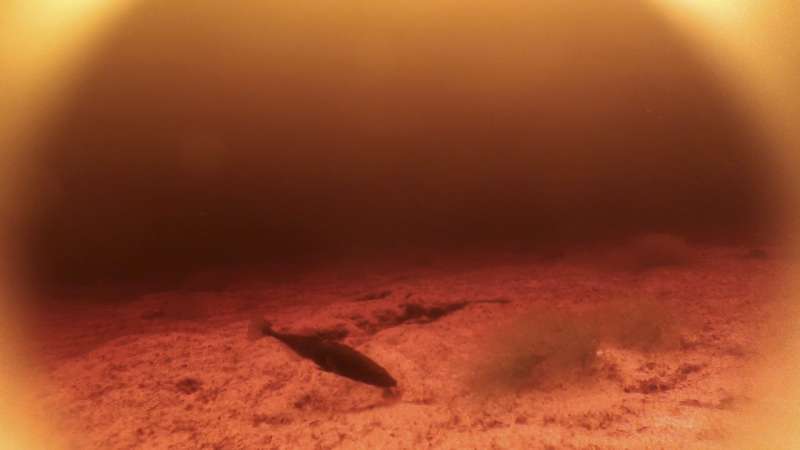Distantly related fish find same evolutionary solution to dark water

Changes in a single color-vision gene demonstrate convergent evolutionary adaptations in widely separated species and across vastly different time scales, according to a study publishing on April 11 in the open access journal PLOS Biology by David Marques of the University of Victoria, British Columbia, and colleagues. The study, which combined genetic analysis with a 19-year-long selection experiment, supports the idea that the mechanisms of adaptive evolution may be more predictable than previously suspected.
Over the past 12,000 years or more, species of three-spined stickleback fish have colonized hundreds of freshwater lakes in the Haida Gwaii archipelago off the coast of British Columbia, forming independently evolving populations. The lakes can be broadly classified as "clearwater," in which full-spectrum light passes relatively unimpeded, or "blackwater," in which most of the visible light is absorbed by dissolved tannins, creating an almost nocturnal environment with only dim, red-shifted light filtering in from above.
Cone cells responsible for color vision in the stickleback retina contain SWS2, an opsin protein sensitive to blue light. Amino acid changes in SWS2 have been previously shown to "tune" this opsin to make it more sensitive to either the blue or red end of the spectrum. In the current study, the authors compared genetic sequences of SWS2 from marine, clearwater, and blackwater sticklebacks, including a group of blackwater fish that they had transplanted to an empty clearwater lake 19 years previously and left there to evolve.
The researchers found that the pattern of genetic changes in SWS2 seen in blackwater sticklebacks implied there had been very strong selection for red-shift tuning, maximizing the opsin's sensitivity in the dark water; no such pattern was seen in clearwater sticklebacks. In blackwater fish transplanted to a clearwater lake, after only 13 generations, many members of the population contained alternative versions of SWS2 that were more sensitive to the more abundant blue light of their new habitat, demonstrating the rapid effect of this selective pressure.
Next, the authors compared their stickleback results to previously published opsin genes in two related species of fish (bluefin killifish and black bream), separated from sticklebacks by millions of years, that had also adapted to blackwater and clearwater habitats. These fish have two distinct copies of the SWS2 gene - SWS2A and SWS2B, which arose from an ancient gene duplication event 198 million years ago in the ancestor of all spiny-finned fish. Remarkably, two of the same genetic changes seen in stickleback SWS2 also distinguish SWS2A (red-shifted) and SWS2B (blue-shifted) of these fish species, with whom they last shared a common ancestor many million years ago. Since the same genetic changes arose separately in their ancestor and in the sticklebacks, they demonstrate convergent evolution, but over vastly different time scales.
"These data support the emerging view in evolutionary biology that mechanisms underlying adaptive evolution are often highly repeatable and thus may be predictable," said Marques. "They show that evolutionary 'tinkering' with a limited set of tools can lead to convergent 'solutions' to common problems both within species and between widely separated groups."
More information: Marques DA, Taylor JS, Jones FC, Di Palma F, Kingsley DM, Reimchen TE (2017) Convergent evolution of SWS2 opsin facilitates adaptive radiation of threespine stickleback into different light environments. PLoS Biol 15(4): e2001627. DOI: 10.1371/journal.pbio.2001627
Journal information: PLoS Biology
Provided by Public Library of Science


















